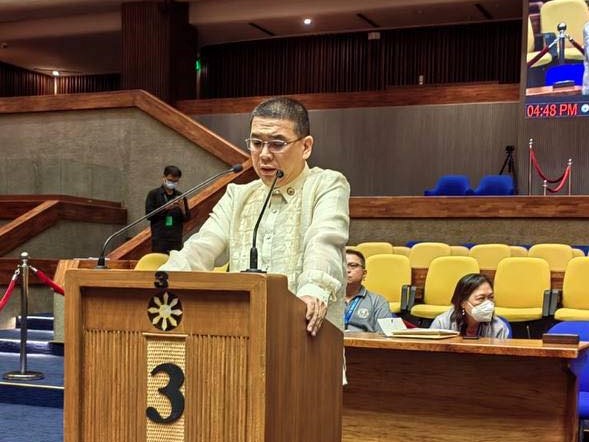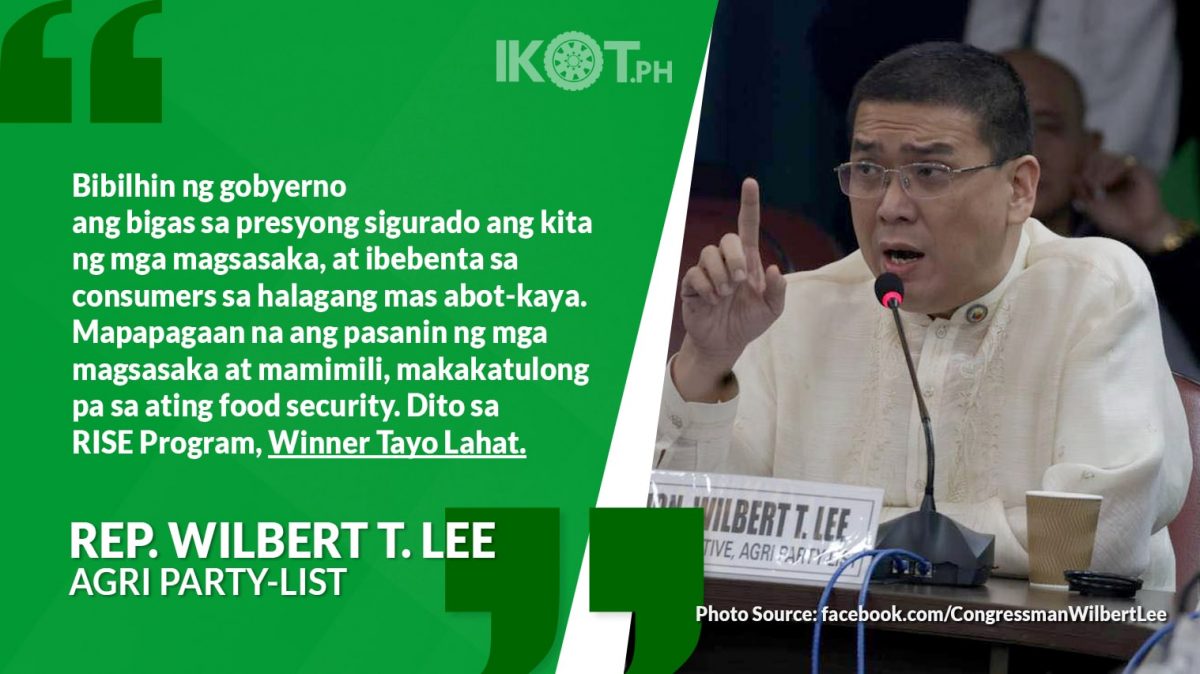With international rice supplies and prices in a constant state of instability and unpredictability, and local rice production unable to guarantee affordable rice for consumers, AGRI Party-list Rep. Wilbert T. Lee proposed the establishment of a subsidy program designed to encourage Filipino farmers to produce enough rice stocks to make the country rice self-sufficient.
Dubbed the Rice Incentivization, Self-Sufficiency, and Enterprise (RISE) Program, its objective is to make rice production profitable for farmers while ensuring that rice prices remain stable and affordable for the ordinary Filipino consumer via a subsidy that will be provided for the country’s estimated 2.6 million rice farmers.
Aside from buying rice from farmers at competitive prices, the RISE Program will mandate the government to sell the rice it acquires to consumers at affordable rates.
“Panahon na para maglaan ang gobyerno ng subsidiya sa pagbili ng bigas sa mga magsasaka sa presyong tiyak ang kanilang magiging kita para masuportahan ang pamilya. Kung hahayaan natin na manatili ang mga problema sa sektor at mas bumigat pa ang pasanin ng mga magsasaka, panghihinaan sila ng loob na magpatuloy sa kanilang kabuhayan at mahihirapan tayong hikayatin ang kabataan na pasukin ang agrikultura. We will also have an epidemic of rice fields being turned into subdivisions,” warned the lawmaker from Bicol.
“Via the RISE Program, we believe there is a chance for the Philippine rice industry to rise again. Sa subsidiyang ito ng gobyerno para masigurong maibebenta ng mga magsasaka ang bigas sa presyong hindi sila babaratin, ma-e-engganyo silang pataasin ang kanilang produksyon. Sa tulong nito, magkakaroon ng sapat na supply ang bansa at hindi tayo aasa lang sa importasyon.”

He added that aside from buying rice from farmers at competitive prices, the RISE Program will mandate the government to sell the rice it acquires to consumers at affordable rates.
“Bibilhin ng gobyerno ang bigas sa presyong sigurado ang kita ng mga magsasaka, at ibebenta sa consumers sa halagang mas abot-kaya. Mapapagaan na ang pasanin ng mga magsasaka at mamimili, makakatulong pa sa ating food security. Dito sa RISE Program, Winner Tayo Lahat,” stressed Lee.
“Kailangan itong paglaanan ng kaukulang budget para matugunan na ang kakulangan sa bigas na napakatagal nang pinoproblema ng ating bansa,” explained the legislator, who emphasized that the government should treat the country’s food security like a national security issue.
Figures from PhilRice also reveal that the average rice import dependency ratio of the Philippines from 2001 to 2021 is 12%, with a low of 3% in 2013 and a high of 20% in 2019.
“Noong 2001, nag-import tayo ng 808,000 metric tons ng bigas. Nung 2021, 2.9 million na. The amount has more than tripled, and all the while we have rice-exporting countries that have decided to halt rice exports. Nakakabahala na maging dependent na lang tayo sa ibang bansa sa supply ng bigas. Imbes na importasyon, dapat pataasin ang lokal na produksyon,” the solon pointed out.
Data from the Philippine Rice Research Institute (PhilRice) shows that in 2021, the country imported 2.9 million metric tons of rice, while in 2020 the country brought in 2.2 million metric tons of the food staple. In 2019, on the other hand, the country imported a whopping 3.1 million metric tons of rice.
Figures from PhilRice also reveal that the average rice import dependency ratio of the Philippines from 2001 to 2021 is 12%, with a low of 3% in 2013 and a high of 20% in 2019.
The import dependency ratio indicates the extent to which a country’s supply of commodities came from imports. A higher ratio implies greater dependency on importation.



